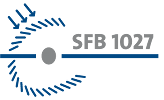Venue
The conference Cell Physics 2014 will take place at the Saarland University, on the Campus Saarbrücken in Building E2 2 (Computer Science Lecture Hall):

Saarbrücken is easily reached by train - in particular from Paris (1h50m) and Mannheim (1h) and Frankfurt (2h). The closest airport is Frankfurt International Airport, from where one can take trains to Saarbrücken. The main campus of the Saarland University is located within the city limits easily accessible from downtown and the main train station by public transportation. It is most easily reached by bus - from the main train station with line 124, from the city hall with line 101 and 102.
About Saarland University and Saarbrücken
The Saarland University is a modern university within the Saar-Lor-Lux region - a dynamic part of Europe defined by the shared borders between Germany, France and Luxembourg. An international perspective has been a defining feature of Saarland University ever since it was established in cooperation with France in 1948. Today, 18.500 young people are studying in Saarbrücken and Homburg (faculty of medicine), 16 per cent of whom are international students. Located in a pleasant woodland setting, the university campus offers students and researchers a broad range of sporting and cultural activities, which together with the numerous cafés and restaurants make the campus an ideal place to relax between lectures or after work. And thanks to the high-speed ICE train link it takes only two hours to travel from Saarbrücken to Paris.
Saarbrücken is the capital city of the federal state Saarland. With approximately 190.000 inhabitants it is a smallish city with a pleasant size. Picturesque rural areas and places of historic interest offering the perfect destination for a hike or a daytrip. The cultural palette attracts visitors from far and wide.
Saarbrücken has experienced a diverse past in its over 1,000-year history. In 999 Emperor Otto III gave the royal seat “Sarabrucca” to the bishops of Metz as a gift. This is the first documented evidence of the town now known as Saarbrücken. The 18th century buildings designed by the architect Friedrich Joachim Stengel were erected during the heyday of the Baroque period. His constructions shaped the face of the town and set the scene for its consequent architectural development.
The Saarland has frequently changed hands between France and Germany during the last 200 years. Since 1957 the region has been an integral part of the Federal Republic of Germany, but the common passion for all things French is unmistakable. A certain “savoir vivre” mentality permeates the region´s atmosphere. This is reflected by the local hospitality and predilection for food and drink. The proximity to France can also be detected in the region´s cuisine: for many years renowned food critics have granted restaurants here distinguished awards.




